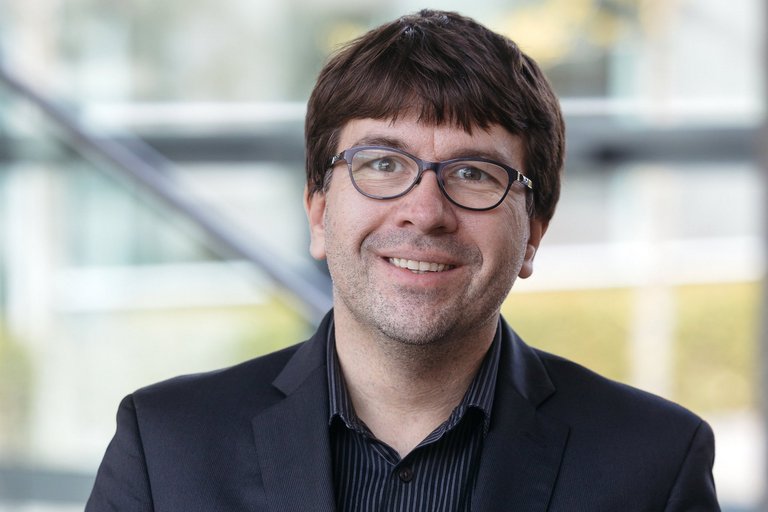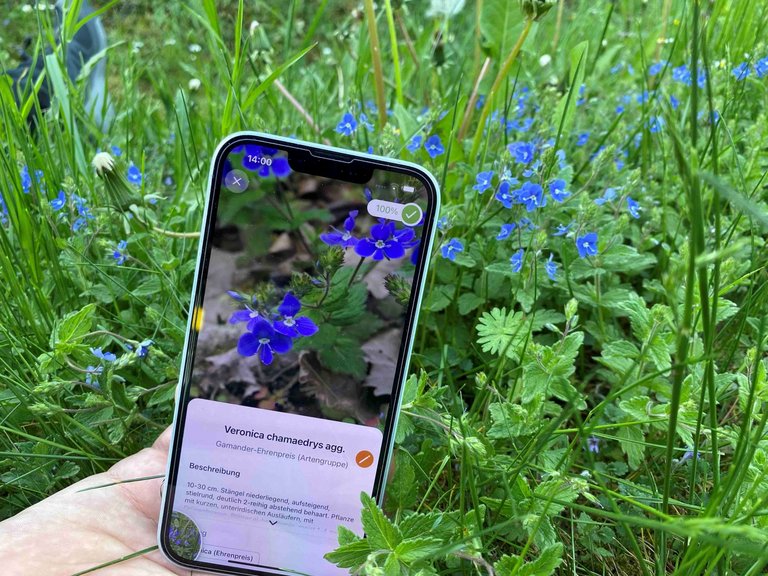In just a few clicks through 16,000 plant species - this is made possible by "Flora Incognita," a plant recognition app. The inventor of the app, Prof. Patrick Mäder is head of the Data-intensive Systems and Visualization Group at TU Ilmenau. He has set himself the goal of using Artificial Intelligence (AI) to protect our native flora and fauna. On the occasion of International Biodiversity Day, the professor tells us how he uses Deep Learning to document plant species, monitor wild bee populations and create habitats for insects.

Prof. Mäder, International Biodiversity Day is a reminder of our obligation and responsibility to protect and conserve biodiversity. In various research projects, you are using artificial intelligence (AI) for use in nature, for example to identify plants with the help of the "Flora Incognita" app, or in "BeesUp" for wild bee-friendly urban planning. Can AI help preserve biodiversity?
Yes! Probably the first priority for biodiversity conservation is to know and be able to address species - otherwise you don't notice when they go extinct. We conducted a survey in 2018 where 38% of respondents said they knew less than 20 herbaceous, wild plant species. Only 10% were able to address over 100 species. Considering that rough grasslands can support up to 600 plant species, as well as 90% of native butterfly species, but many people perceive such habitats as simply "grass" - how can we promote biodiversity conservation?
Artificial intelligence in the form of image recognition via Deep Learning can help. With the simplest of tools and in a matter of seconds, users of the Flora-Incognita app can already identify more than 16,000 different plant species, read descriptions and collect badges for collected groups. This almost playful approach to biodiversity is making a major contribution to raising public awareness of the decline in biodiversity.
In the "BeesUp" project, we use artificial intelligence to identify wild bee species and make species-specific recommendations for planting flowering strips, creating nesting opportunities or monitoring changes in wild bee populations. Such trend analyses - when, where, which species (no longer) occur - are now becoming possible on a large scale through Artificial Intelligence.
Weeds provide habitat for a variety of insects. In the "Better Weeds" project, they are using AI to identify and evaluate weed species occurring on agricultural land. Why are these being recorded and what insights do you hope to gain from the project or are there already concrete findings?
The segetal flora, which can be found on field margins and was the plant community of the year in its manifestation of the vegetation of the Kalkäcker (Caucalidion) in 2022, is very valuable from a biodiversity perspective. Not only do a great many different plant species occur here, but they also form habitats and corridors for the dispersal of numerous insects. If this field edge is "indiscriminately sprayed," ecosystem services such as pollination or pest control by beneficial insects decline. "BetterWeeds" is designed to address this and help control weeds efficiently but selectively. The good thing is that many farmers (including conventional ones) are willing to implement measures to promote weed diversity on their land - but only if highly competitive weeds are nevertheless controlled as well as possible. We are working in this area of tension and are using drones, for example, to photograph field margins, to automatically document the species diversity from these images, and thus to develop a basis for weed management that protects the valuable segetal flora and at the same time satisfies agriculture. For the upcoming Ilmenau Science Night, we have planned an information booth where interested people can get an insight into this research.
The project "KI4BioDiv" is about the development of methods and technologies for efficient, fast and automated monitoring of biodiversity in different habitats and landscapes. How is AI being used for this and how reliable are the data collected?
This project involves very many groups of organisms. We are currently developing basic methods for documenting and subsequently analyzing the diversity of, for example, moths, mussels, fungi or phytoplankton using simple methods. In order to achieve really robust results for this, we are working on a rather small scale, with selected, very well curated data sets. Artificial intelligence is also used here primarily in deep learning for species recognition, but also in the analysis of time series and in plausibility checks. This is all very exciting, but not yet as "tangible" as the Flora-Incognita app, for example. However, we first need these basic methods to be able to use technology for biodiversity conservation in the future.
For years, we have been lamenting the death of bees and the associated negative effects on our ecosystem. In the joint project "NutriBee," you are investigating the extent to which stress influences bee health. What insights have you already been able to gain?
Our project partners have collected exciting data for this: several hundred genetically identical bee colonies were deployed at different locations, and the measurements on the hives enable us to relate changes in bee health to the respective environmental influences. We are currently evaluating these data using machine intelligence. These are quite specific aspects such as various physiological changes, for example in the enzyme activity of catalase. We also observed changes in mRNA gene expression and the microbiome in the bees. Perhaps more tangibly for readers, we found differences in longevity and the amount of honey produced as a function of various stressors, such as the use of fungicides and reduced amounts of food collected. However, I cannot reveal more precise results here, as the measurements will continue this year and we obviously do not want to anticipate the final findings.
About the person:
After studying industrial engineering at the Technical University of Ilmenau, Patrick Mäder worked as a consultant and software developer in projects for various automotive manufacturers and suppliers. In 2005 he started his PhD at the TU Ilmenau and worked on the continuous traceability of software developments. For his dissertation he received the Thuringian STIFT award.
From 2010, Patrick Mäder conducted research as a Lise Meitner Fellow at Johannes Kepler University Linz at the Institute for Software Systems Engineering. In 2012, he returned to TU Ilmenau and acquired, processed, and coordinated numerous third-party funded projects in the areas of software engineering and machine learning. During this time, he spent various research stays of several months at DePaul University Chicago. Since 2016, he was junior professor of the endowed chair Software Engineering for Safety-Critical Systems at the Faculty of Computer Science and Automation and expanded it to a department with 18 research associates at last count.
In 2021, he was appointed University Professor and Head of the Department of Data-intensive Systems and Visualization at the Faculty of Computer Science and Automation. His research is devoted to topics in secure and reliable software; scalable, multi-modal and explainable machine learning; and computational biology and ecology. In 2020, he and the project team were awarded the Thuringian Research Prize in the category of Applied Research for the development of an app-based solution for the identification of native plants "Flora Incognita".
He applies his expertise in computer science, engineering and related scientific fields to the protection of our native flora and fauna. In 2006 and 2012, he participated in expeditions to Siberia that lasted several weeks. Under adventurous conditions he conducted ecological investigations there, changed his awareness of biodiversity: His goal is to bring together competencies from different scientific fields in order to investigate complex interrelationships, to understand them and to develop foundations for solutions for species conservation.
Contact
Prof. Patrick Mäder
Head of the Data-intensive Systems and Visualization Group


